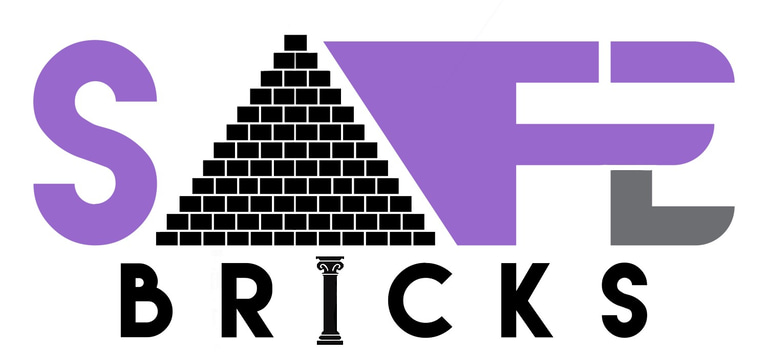Heating & Services Layouts for Garage Conversions in Brighton & Hove
How to keep your new room warm, wired and future-proof without sacrificing floor space.
Why Services Planning Comes First
Structural steel, insulation depth and floor buildup all hinge on pipe and cable routes.
Retrofitting services after plastering risks cold bridges, surface trunking and costly re-work.
Brighton’s coastal climate means salt-laden air corrodes budget components—specify marine-grade or indoor-rated kit from the start.
Heating Options That Fit Tight Spaces
Tie into the existing boiler circuit
Add two oversized, low-temperature radiators.
Use TRVs and a dedicated zone valve so the main house can run a separate schedule.
Lag new 15 mm flow and return pipes with 25 mm insulation; route in the insulated floor buildup to avoid chases in bungaroosh walls.
Electric under-floor heating mats
Perfect for yoga studios and playrooms where wall space is limited.
Install 200 W/m² mats on insulation boards, then cover with self-levelling compound.
Pair with a floor-sensor thermostat to prevent overheating engineered-wood boards.
Air-to-air heat pump
Mini-split system offers heating and cooling in one.
Place the outdoor unit on a rear wall out of prevailing south-westerlies to limit salt corrosion.
Low running cost; ideal for gyms needing rapid heat-up times.
Plumbing Strategies for En-Suites and Wet Bars
Gravity soil pipe
Best option if the main stack sits within six metres and 45° of fall can be achieved under floor.
Use a 110 mm pipe encased in screed or boxed behind a service wall.
Macerator (up-flush) system
Compact 32 mm discharge pipe routes above floor level.
Noise suppressed by acoustic matting and a stud wall; check serviceability panel is accessible.
Annual descaling essential in hard-water Brighton.
Hot and cold feeds
Microbore pipes minimise floor buildup.
Lag with 13 mm nitrile foam to stop heat loss and condensation.
Electrical Layout – Safe, Smart and Future-Proof
Consumer-unit considerations
Many garages already host the main board; if not, install a two-way sub-board with SPD and RCBO protection.
Route 25 mm tails in metal trunking to comply with coastal corrosion guidance.
Socket scheduling
Home office: twin socket and CAT-6 port every 1.8 m.
Gym: 32 A commando outlet for high-load treadmills.
Guest room: USB-C outlets at each bedside.
Lighting design
Five-watt LED downlights at 600 mm from wall lines create even wash.
Task lighting over desk or vanity mirror on separate dimmable circuit.
Exterior PIR light at the new entry door improves security; ensure IP65 rating.
Data, Media and Smart-Home Integration
CAT-6 or CAT-7 back to the router for lag-free work calls.
Coax or fibre-optic for streaming TV points.
Conduit sleeves in the floor screed allow future cable pulls without breaking finishes.
Smart thermostats, humidity sensors and alarm contact wired in a star configuration to avoid voltage drop.
Ventilation Duct Routes That Don’t Steal Headroom
Use 204 × 60 mm rectangular rigid duct above door lintels.
Keep bends to 30° where possible; each 90° adds equivalent of two metres resistance.
Terminate MVHR intake and exhaust on opposite façades to prevent cross-contamination—rear wall intake, side-wall exhaust typical for Brighton plots.
Fire-Safe Service Penetrations
Wrap pipes and cables with intumescent collars or mineral-fibre sleeves.
Position sockets minimum 150 mm above finished-floor level on external bungaroosh walls to avoid salt splash.
Case Example – Home Office Fit-Out in Prestonville
Under-floor heating mat paired with an air-to-air heat pump for spring and autumn cooling.
Sub-board added next to existing meter, feeding two radial circuits: power and data.
MVHR unit in wall-hung cupboard; ducting boxed in a timber bulkhead above the desk.
Outcome: 23 °C interior temp on a 9 °C February morning, 38 dB background noise level, zero condensation after six months.
Energy Efficiency Gains
Combining mineral-wool in walls with low-temperature radiators trimmed heating demand by 35 percent versus electric panel heaters.
MVHR recovered 75 percent of heat while keeping relative humidity at 50–55 percent.
Air-tightness test achieved 5 m³/h·m² at 50 Pa—well below the Building Regs threshold.
Maintenance Tips
Flush UFH circuit annually; coastal debris can collect in manifolds.
Replace MVHR G4 filters every six months to combat sea-salt ingress.
Check macerator anti-vibration mounts yearly and descale pump chamber.
Linked Reads in the Garage-Conversion Series
USE THE FORM BELOW TO GET YOUR FREE QUOTE TODAY!
Safe-Bricks Limited © 2025. All rights reserved.




